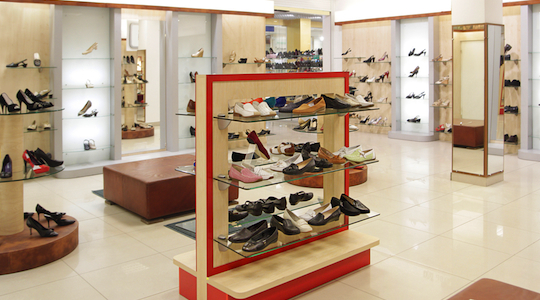The science of retail: four principles of retail space optimisation
Share

Neil Arrowsmith, group CEO of design-led retail consultancy Greater Group, shares his four principles of design that retailers can use to optimise spaces.
Optimising the value of space is about using the available space in the best way possible to achieve optimum results. In essence, this means that your merchandise needs to be easily visible and accessible, but in an environment that also creates a positive shopping experience for the customer.
There are four key principles of design that must be right before space optimisation can be achieved:
- Equalise space,
- direct through space,
- maximise sightlines and access, and
- manage categories and adjacencies.
1. Equalise space
Every square metre of the store needs to work as hard for you as the next. Store layout and segmentation needs to be clear and must be able to satisfy the primary shopping mission of every customer. Therefore, knowing how your customer shops and what she shops for is essential.
2. Direct through space
This is about creating a deliberate pathway through the store so that shoppers have an easy journey from the threshold to their chosen category, and in the process can view as much of your other merchandise as possible. Clever use of flooring, the position and orientation of gondolas and even lighting are all effective ways of directing customers through space.
3. Sightlines and access
Customers need to have good sightlines and easy access to every area of the store. They need to be able to identify where to browse, where to interact and where to transact whilst still standing on the threshold. Using lower units towards the front of the store ensures that areas and products towards the back remain visible.
4. Categories and adjacencies
Good category management and use of adjacencies helps a customer understand where to locate merchandise and can increase sales. Place related categories together, such as belts next to jeans, and display your best seller in a prime location.
Applying the four principles
When applying the four principles, it is essential to take into account the customer’s need for a sense of space. Don’t make the mistake of believing that optimising space is about cramming in as much as possible.
Try to create a feeling of openness and calm. Perhaps you can reduce your use of the central area by making better use of wall space. Power walls, for example, can be used to great effect for displaying accessories, leaving the rest of the store for clothes and making the segmentation of the store easy for the customer to understand.
When using gondolas, keep as much space as possible between each one and consider using the top of the gondola for the display of key accessories, which work with the clothes beneath. It is an excellent opportunity for cross selling, which works for both the customer and you.
As co-founder of greater group and with over 30 years experience in retail design, Neil focuses on the big picture and specialises in shopper behaviour, category management and value engineering.















